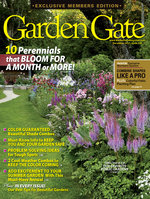Do you have a green thumb? If so, you know that plants need nutrients to thrive. But did you know that you can make your plant food using simple ingredients? Homemade plant food is a great way to give plants the nutrients they need without breaking the bank. This post will show you five simple tips for making and using homemade plant food to keep your plants healthy and green.
From finding the right ingredients to ensuring you add the right amount of fertilizer, we’ll show you how to make and use your homemade plant food. Plus, you’ll enjoy knowing you’ve done something good for the environment by making your plant food.
Benefits of Using Homemade Plant Food
Homemade plant food is one of the best ways to ensure your plants get the nutrients they need. Not only does homemade plant food often cost less than store-bought versions, but it is also usually more effective. Homemade plant food can help improve soil quality, increase water retention and nutrient absorption. Additionally, making your organic plant food is beneficial for the environment as it reduces the chemicals used in typical fertilizers.
Creating Homemade Plant Food
When it comes to creating homemade plant food, there are several different recipes you can choose from. The ingredients and steps involved will vary depending on the type of plant and its specific needs. Generally, you will need base materials such as compost, aged manure and bone meal, which you can find at most garden centers. You will also need soil amendments like wood ash and greensand that you can use to provide additional nutrients to the soil and plants.
Tip 1: Monitor Plant Nutrients
Before you start making homemade plant food, knowing which nutrients your plants need is important. Different types of plants require specific levels of nitrogen, phosphorus and potassium to thrive. Testing your soil with a pH test kit will help you determine how many nutrients each type of plant needs, and should be done before you begin creating your food mix. Once the testing is complete, you can combine the right ingredients for the perfect fertilizer recipe.
Tip 2: Add Compost
Adding compost is one of the best ways to ensure plants receive all the nutrients they need for healthy growth. Compost provides essential nutrients like nitrogen, phosphorus, potassium, and other trace elements like calcium, magnesium and sulfur, which help improve soil structure and fertility. You can add bits of organic materials like leaves, grass clippings and kitchen scraps to create a nutrient-rich compost mix that will give your plants all the necessary nourishment.
Tip 3: Use Coffee Grounds
You can use coffee grounds as an excellent nitrogen source for your garden plants. Coffee grounds have a high level of nitrogen and other trace elements such as phosphorus and potassium that will help promote healthy plant growth. When using coffee grounds for fertilizing, simply scatter them around the base of your plants or mix them into your compost pile for extra nourishment.
Tip 4: Mix Liquid Plant Food
Creating liquid plant food is an easy way to provide fast-acting nourishment to your garden plants without purchasing store-bought fertilizer. Mixing various organic materials like fish emulsion, kelp meal, worm castings or molasses with water in a backpack sprayer can make an effective liquid fertilizer quickly leach into the ground and provide essential nutrients for your plants.
Tip 5: Invest in a Worm Compost Bin
Investing in a worm compost bin is a great way to make sure your plants get all the necessary nutrients they need while also reducing waste from your kitchen scraps at the same time. You can add a worm compost bin that uses worms to break down kitchen scraps into nutrient-rich fertilizer for garden beds or water into potted plants directly to boost plant health. The worms also aerate the soil while they dig tunnels throughout your garden beds, allowing air and water to penetrate better, resulting in healthier root systems and more lush foliage year after year!
Conclusion
Making and using homemade plant food is an excellent way to provide your plants with the nutrients they need while reducing your environmental footprint at the same time. From monitoring the soil nutrients to adding compost and coffee grounds, there are many simple ways to make your plant food. Plus, investing in a worm compost bin can give you an easy way to create nutrient-rich soil and reduce kitchen waste simultaneously. With these five tips, you can give your plants the best nutrition while saving money and helping the environment.
















